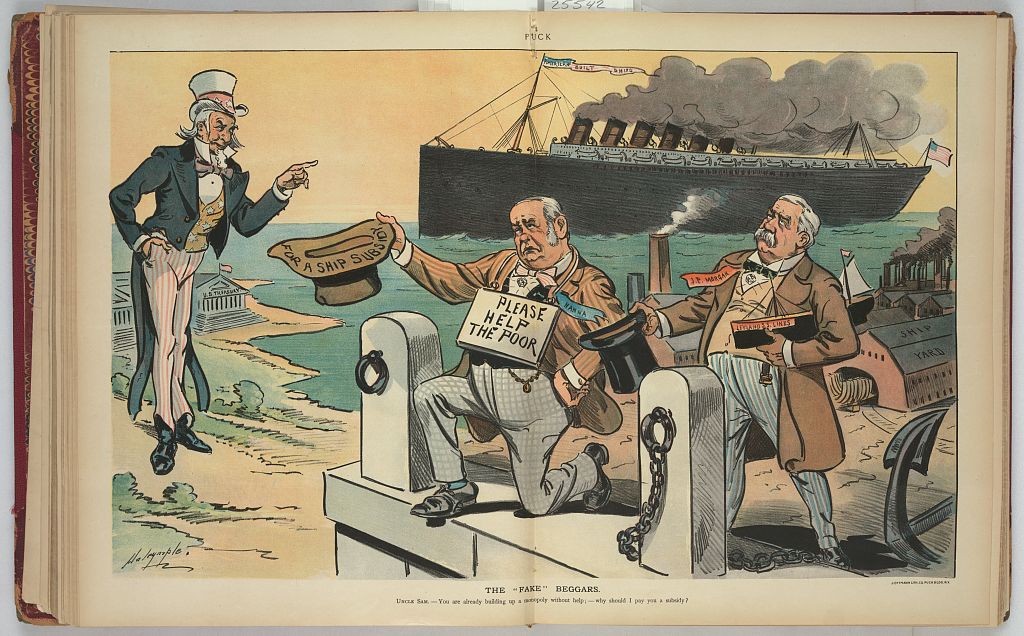It’s a well-known fact that a little humor goes a long way in nearly every situation. Whether you’re teaching students or giving a presentation, making someone laugh or smile is often the easiest way to get people to engage.
While primary sources contain a wealth of information, they can also contain a wealth of humor if you know where to look! This month’s focus, Puck Magazine, is among the first successful “humor magazines” in America, publishing cartoons, comedy, and caricatures. Though it began in several alternate forms, the first magazine was published in 1877 and would continue publication for nearly 40 years. An excellent precursor to much modern political satire, they included regular sections in their publications, such as musings from a fictitious character named “Fitznoodle,” collections of “Puckerings” that provided short quips or humor, and a variety of short stories and images that made light of recent politics.
Some of the humor is still surprisingly funny, even 147 years later. After browsing through the compiled volumes of Puck magazine, there are a few jokes I found particularly humorous:
-
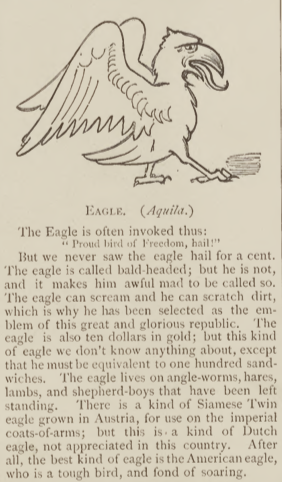
"The Eagle is often invoked thus: 'Proud bird of Freedom, hail!' But we never saw the eagle hail for a cent. The eagle is called bald-headed; but he is not, and it makes him awful mad to be called so. The eagle can scream and he can scratch dirt, which is why he has been selected as the emblem of this great and glorious republic..."
-
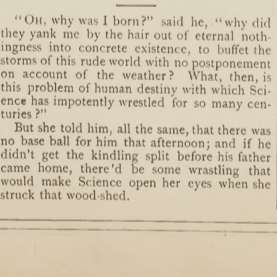
"'Oh, why was I born?' said he, 'why did they yank me by the hair out of eternal nothingness into concrete existence, to buffet the storms of this rude world with no postponement on account of the weather? What, then, is this problem of human destiny with which Science has impotently wrestled for so many centuries?' But she told him, all the same, that there was no base ball for him that afternoon..."
-
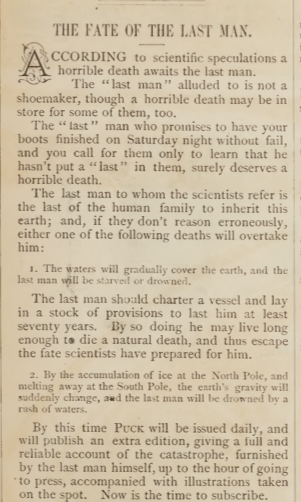
"According to scientific speculations a horrible death awaits the last man. The 'last man' alluded to is not a shoemaker, though a horrible death may be in store for some of them, too. The 'last' man who promises to have your boots finished on Saturday night without fail, and you call for them only to learn that he hasn't put a 'last' in them, surely deserves a horrible death..."
It's humor that, while written much unlike the way that jokes are told today, is still easily understood. Each of them make snide, critical remarks towards a certain situation. Even if those situations are no longer relatable, such as that of the shoemaker, the idea of the joke is still relatable to a situation that I know. I found great pleasure in scouring the magazines for bits such as these. However, not every joke had me laughing... There were a few that left me more perplexed than anything else:
-
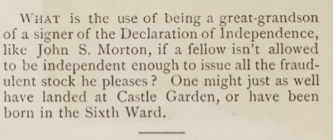
"What is the use of being a great-grandson of a singer of the Declaration of Independence like John S. Morton, if a fellow isn't allowed to be independent enough to issue all the fraudulent stock he pleases? One might just as well have landed at Castle Garden, or have been born in the Sixth Ward."
-
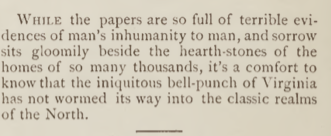
"While the papers are so full of terrible evidences of man's inhumanity to man, and sorry sits gloomily beside the hearth-stones of the homes of so many thousands, it's a comfort to know that the iniquitous bell-punch of Virginia has not wormed its way into the classic realms of the North."
-
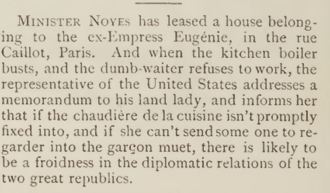
"Mister Noves has leased a house belonging to the ex-Empress Eugenie, in the rue Caillot, Paris. And when the kitchen boiler busts, and the dumb-waiter refuses to work, the representative of the United States addresses a memorandum of his land lady, and informs her that if the chaudière de la cuisine isn't promptly fixed into, and if she can't send some one to regarder into the garçon muet, there is likely to be a froidness in the diplomatic relations of the two great republics."
There are elements of each joke that I understand, but often paired with something unfamiliar. What becomes quickly apparent is that the root of humor is context – for the jokes that land, very little context is needed to understand the humor. For the ones that don’t, one can’t help but feel that there is something that they’re missing. This feeling of absence, however, is exactly the spark that can be cultivated for education’s sake.
Take the following cartoon as an example:
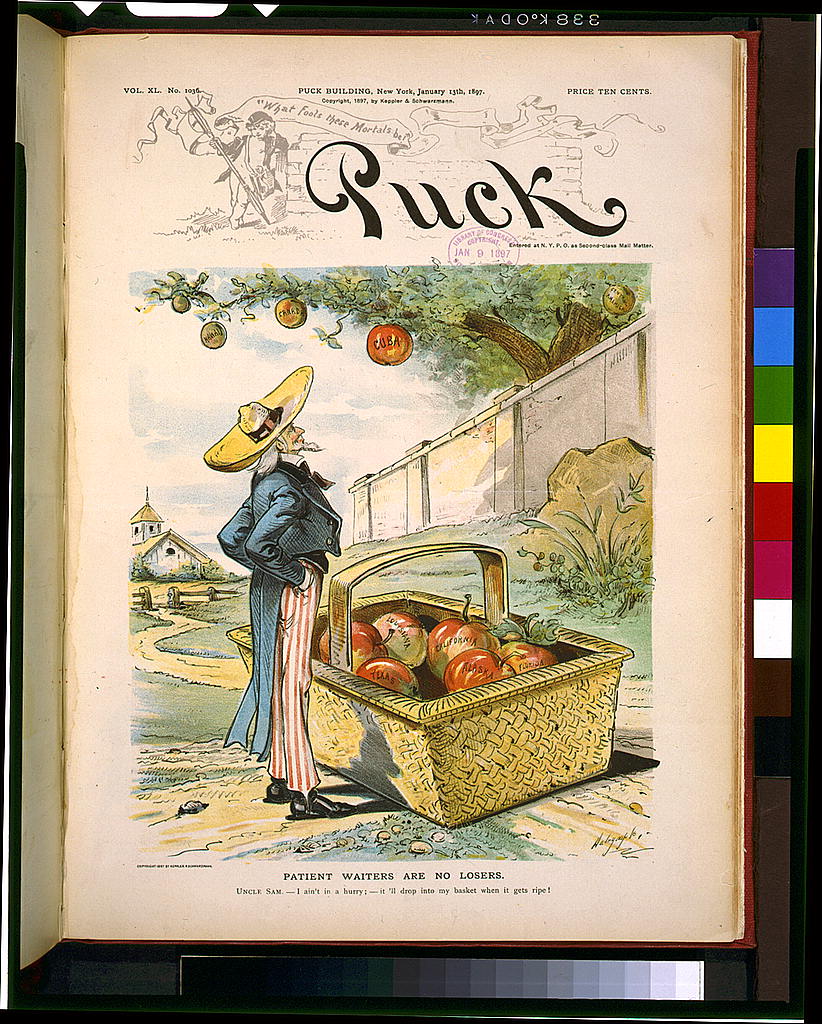
Dalrymple, Louis, Artist. Patient waiters are no losers / Dalrymple . [published] Photograph. Retrieved from the Library of Congress, <www.loc.gov/item/95523065/>.
Three apples, labeled “Cuba,” “Hawaii,” and “Canada” hang deliciously of a basket of fresh apples, labeled with the names of acquired territories like Alaska, Louisiana, and Texas. Captioned, “Patient waiters are no losers,” Uncle Sam looks upward with his hands in his pockets, seemingly unhurried. Using this image in a classroom would be an excellent introduction to the practice of generating inferences from cartoons. Consider asking students what the “message” of this political cartoon might be. It is almost guaranteed that students will understand that this is about the United States’ continued prospect towards the acquisition of new lands and resources.
Though the United States never acquired Canada and Cuba (though, this does not mean they did not try), Hawaii would retain statehood in 1959. Interestingly, this image provides a window into a time before the status quo where the modern-day examiner has a greater context than its initial audience. Thanks to this, it is an easy image to understand, albeit, not particularly humorous.
Not every image is as simple, however.
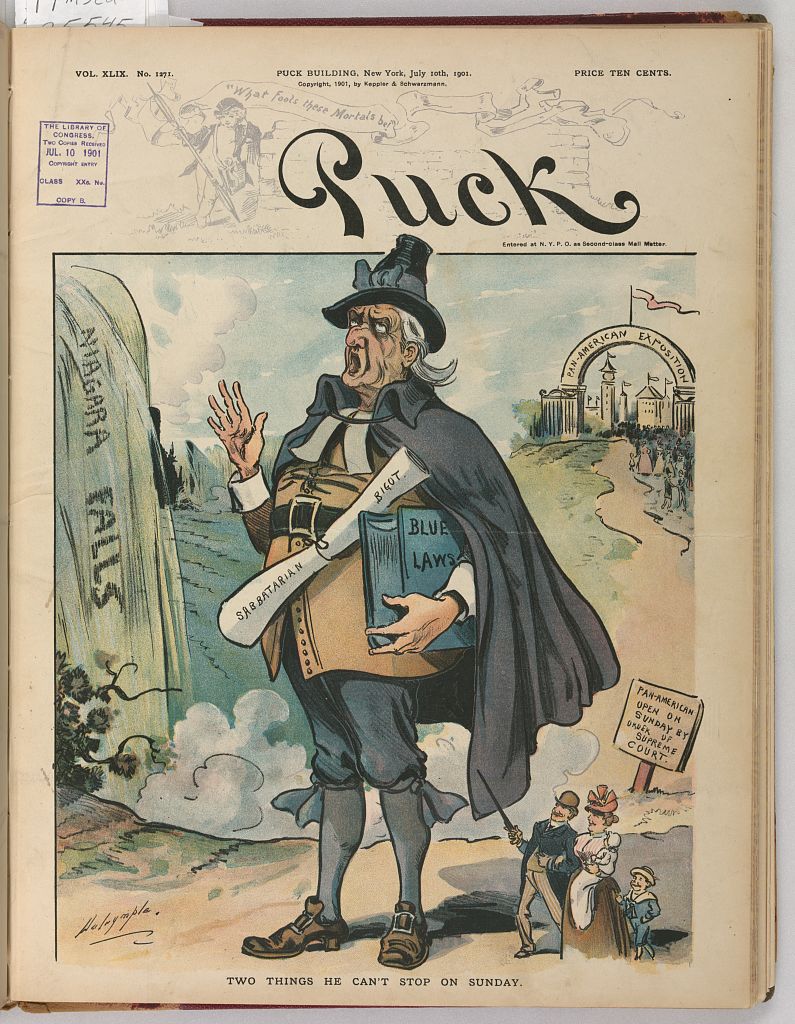
Dalrymple, Louis, Artist. Two things he can't stop on sunday / Dalrymple . N.Y.: J. Ottmann Lith. Co., Puck Bldg. Photograph. Retrieved from the Library of Congress, <www.loc.gov/item/2010651443/>.
Consider the above image from a 1901 issue of Puck Magazine, captioned “Two things he can’t stop on Sunday.” An immense amount of context is needed to make meaning of this picture, which is an excellent opportunity for students to work together to think critically about possible meanings. If extra help is needed, consider asking guiding questions:
- Who or what is the man in the middle of the road supposed to represent?
- What are the two “things” that the man is trying to stop?
- What is he trying to stop them from doing?
- Why might he be trying to stop them from doing it?
Encourage participants to complete this examination without looking anything up – at least, not yet! By asking these leading questions, students can begin to piece together answers to create an assumed context fully based on their prior knowledge. For instance, a student might identify that he is trying to stop families from entering the “Pan-American Expo” because he holds “blue laws” close to his heart. Then, when the actual research is completed, teachers and students alike can assess their success at reading these political images based on the relativity of their assumptions. Perhaps a student correctly identified that the “Pan-American Expo” was something of a World’s Fair, but incorrectly assumed that “Blue Laws” were laws designed with a democratic leaning. By researching, they will discover that these are actually laws that project Christian morality by composing law that aligns with relgious practices. Suddenly, the man's "puritan" outfit makes sense, and now the caption and the sign can be placed into their proper context.
While teachers should be encouraged to pull elements from the magazine, they should also be wary of letting younger students roam free through the resource itself. In instances, the magazine can certainly be viewed as a product of its time. Consider the following image for example:
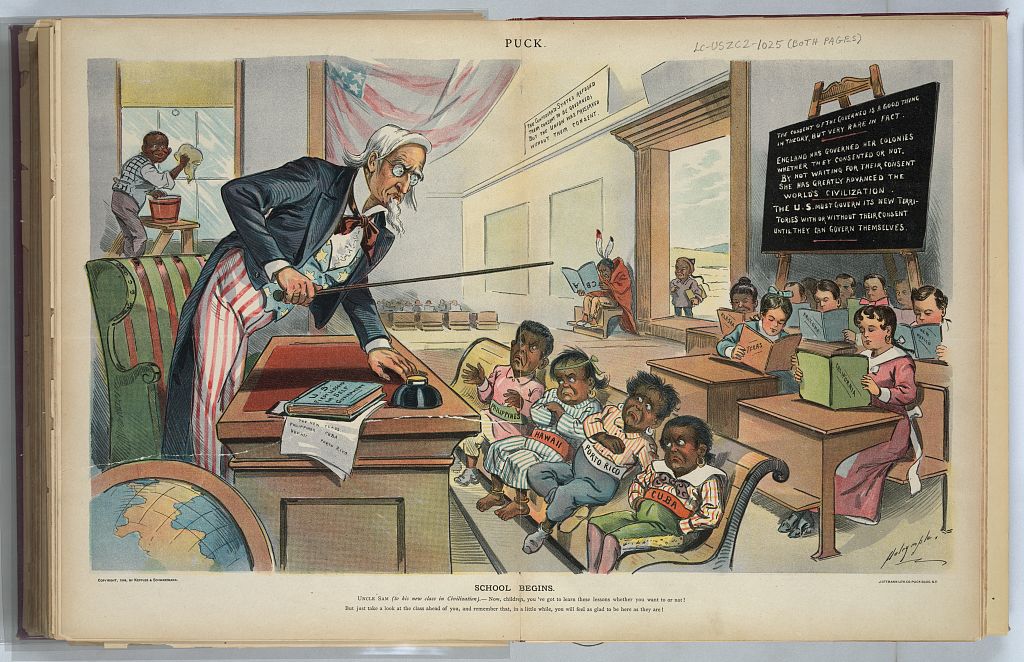
Dalrymple, Louis, Artist. School begins / Dalrymple . N.Y.: Published by Keppler & Schwarzmann. Photograph. Retrieved from the Library of Congress, <www.loc.gov/item/2012647459/>.
This image, titled “School Begins” is a statement of the United States’ efforts to “re-educate” certain populations. The language of the caption is especially poignant – “Whether you want to or not.” However, the physical depictions of non-white ethnic groups in the photograph are fairly typical of the time period: othering and derogatory.
However, the actual messages delivered by this image are profound the longer that it is examined. An American Indian student in the background is separated from the class, attempting to read, yet holding the book upside-down. A Black child looks on towards the rest of the classroom as he wipes the windows, seeing the opportunity for education, but not being allowed it himself. In the back, there seems to be an entire crowd of faceless observers, looking on into the classroom, yet doing nothing to intervene. There is a wealth of conversation to be had in this image alone, including pondering the artist’s own biases and opinions.
In summation, political satire can be an excellent tool, when used correctly. In humor, individuals have an inherent sense of absence, of recognition that there is a greater meaning beyond what they currently understand. This can be used to any educator’s advantage to either engage learners with new content or to simply help them practice the skills involved with inferencing. Too, it helps learners become better scholars. By identifying what elements of a joke or image they don’t understand, they have an immediate path to research their deficits and connect these new ideas to previously understood concepts.
